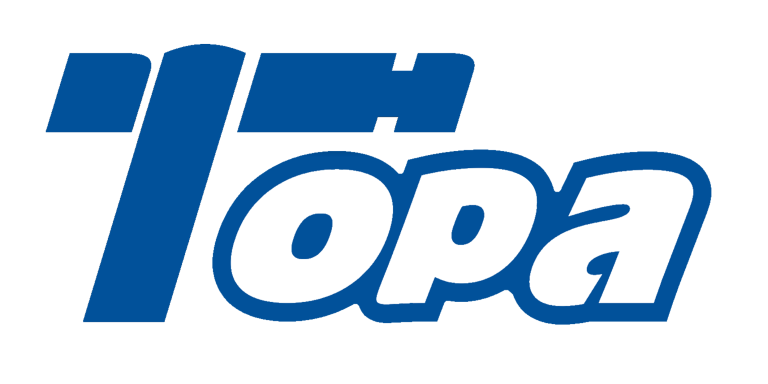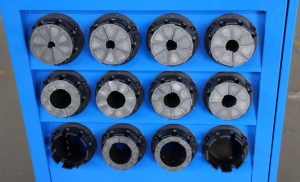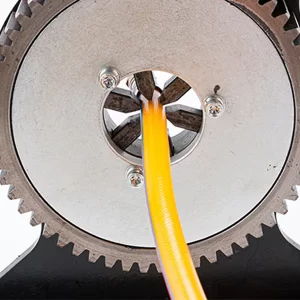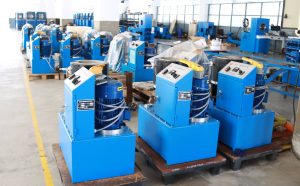Understanding what sets an industrial-grade hydraulic hose crimper apart is essential for businesses that demand reliability, precision, and durability in hose assembly. This article, “What Sets an Industrial-Grade Hydraulic Hose Crimper Apart?”, explores the key differences between industrial and general-purpose crimpers. But here’s the kicker: industrial-grade machines deliver superior performance tailored for heavy-duty applications, ensuring safety and efficiency under demanding conditions. We will examine build quality, performance features, safety protocols, automation, maintenance, and the latest technological advances, providing a comprehensive overview to help you select the right crimper for your industrial needs.
1. What defines an industrial-grade hydraulic hose crimper?
Industrial-grade hydraulic hose crimpers are specifically engineered for heavy-duty, high-volume applications where durability, precision, and safety are paramount. Unlike general-purpose crimpers, industrial models meet rigorous standards for performance and construction. What’s the real story? These machines are designed to operate continuously under tough conditions in industries such as manufacturing, mining, and oil and gas. They handle large hose sizes and high pressures that typical crimpers cannot. For example, an oilfield service company relies on industrial-grade crimpers to assemble hoses that withstand extreme pressures exceeding 10,000 psi. The distinction lies in the materials used, the power of the crimping mechanism, and enhanced control systems that ensure consistent, reliable crimps every time.
| Characteristic | Industrial-Grade Crimper | General-Purpose Crimper |
|---|---|---|
| Build Material | Heavy-duty steel and alloys | Lightweight metals and plastics |
| Operating Capacity | High pressure and large hoses | Moderate pressure and sizes |
| Duty Cycle | Continuous, heavy use | Intermittent use |
2. How does build quality differentiate industrial-grade crimpers?
Build quality is a core factor that separates industrial-grade crimpers from other models. These machines are constructed with reinforced frames and precision-machined components designed to withstand constant use and harsh environments. Ready for the good part? Industrial-grade crimpers feature robust hydraulic systems with high-quality seals and pumps that resist wear and leakage. For instance, a manufacturing plant reported their industrial crimper operated faultlessly over five years of continuous use, whereas a lower-grade model required frequent repairs. The build quality also includes protective coatings and designs that resist corrosion, vibration, and temperature extremes. This durability translates to lower maintenance costs and longer machine lifespans.
| Build Quality Aspect | Industrial-Grade Features | Benefits |
|---|---|---|
| Frame | Reinforced steel with welded joints | Increased machine stability |
| Hydraulic System | High-pressure rated components | Leak prevention and durability |
| Surface Treatment | Anti-corrosion coatings | Longevity in harsh environments |
3. What performance features distinguish industrial-grade crimpers?
Performance-wise, industrial-grade crimpers excel in force capacity, precision, and speed. They apply significantly higher crimping pressures with accuracy, suitable for thick hoses and tough fittings. This is where it gets interesting: advanced control systems allow programmable crimp cycles and repeatability, ensuring consistent quality across large production runs. A mining operation upgraded to an industrial crimper and saw a 35% increase in throughput with zero defects due to precise force control. Additionally, these machines feature faster cycle times, reducing bottlenecks in manufacturing. Their ability to accommodate a wide range of hose sizes and fittings further sets them apart from less capable units.
| Performance Metric | Industrial-Grade Values | Industry Impact |
|---|---|---|
| Crimping Force | Up to 1000 tons | Handles large, high-pressure hoses |
| Precision Control | Programmable, +/- 0.01 mm | Consistent, high-quality crimps |
| Cycle Time | Rapid cycles (seconds) | Increased production rates |
4. How do industrial-grade crimpers handle varied hose sizes and types?
Versatility is a hallmark of industrial-grade crimpers. They support a broad range of hose diameters, from small hydraulic lines to large industrial hoses. But here’s the kicker: interchangeable dies and jaws allow quick adaptation to different hose types, including rubber, thermoplastic, and metal braided hoses. For example, a supplier serving multiple sectors uses one industrial crimper capable of handling hoses ranging from 1/4 inch to over 3 inches in diameter without sacrificing quality. Specialized tooling designed for specific hose materials enhances crimp integrity and safety. This adaptability reduces the need for multiple machines, saving floor space and capital.
| Hose Size Range | Supported By | Example Application |
|---|---|---|
| Small (1/4″ to 1/2″) | Interchangeable small dies | Automotive hydraulics |
| Medium (1/2″ to 1″) | Adjustable jaws and dies | Construction equipment |
| Large (1″ to 3″+) | Heavy-duty dies and frames | Mining and industrial machinery |
5. What safety features are integral to industrial-grade machines?
Safety is non-negotiable in industrial environments, and industrial-grade crimpers incorporate enhanced protective features. Emergency stop buttons, safety guards, and two-hand control systems minimize operator risk. What’s the real story? Compliance with standards like OSHA and CE ensures these machines meet legal safety requirements. A petrochemical plant upgraded to industrial crimpers with full safety interlocks, drastically reducing injury incidents. Safety sensors detect operator presence and halt operation if guards open. Robust machine guarding protects from hydraulic fluid sprays or moving parts, creating a safer workplace.
| Safety Feature | Function | Benefit |
|---|---|---|
| Emergency Stop | Immediate machine shutdown | Prevents accidents |
| Safety Guards | Barriers around moving parts | Operator protection |
| Two-Hand Controls | Require simultaneous inputs | Ensures operator hands clear |
| Presence Sensors | Detect operator position | Automatic shutdown if unsafe |
6. How does automation in industrial-grade crimpers improve efficiency?
Automation revolutionizes industrial crimping by increasing speed, repeatability, and reducing human error. Fully automatic crimpers handle hose feeding, positioning, crimping, and ejection with minimal operator intervention. Ready for the good part? This increases throughput while maintaining quality, ideal for large-scale manufacturing. Semi-automatic machines offer some automation with operator oversight, balancing cost and efficiency. A factory integrating automated crimpers reported a 50% productivity boost and lowered scrap rates. Automated systems often feature touchscreen controls and data logging for quality assurance.
| Automation Level | Features | Production Impact |
|---|---|---|
| Manual | Operator controls entire process | Lower speed, higher labor |
| Semi-Automatic | Automated crimp with manual loading | Moderate speed and accuracy |
| Fully Automatic | Automated feed and ejection | High throughput and consistency |
7. What maintenance requirements set industrial-grade crimpers apart?
Maintenance on industrial-grade crimpers focuses on minimizing downtime through easy serviceability and modular components. Designed for harsh conditions, these machines use wear-resistant parts and sealed hydraulics. This is where it gets interesting: many models feature self-lubricating systems and quick-change dies to reduce maintenance time. A manufacturing plant implemented scheduled maintenance protocols with OEM support, resulting in 25% fewer breakdowns. Access to spare parts and technical training is typically better with industrial-grade suppliers, supporting long machine life and reliability.
| Maintenance Aspect | Industrial-Grade Feature | Benefit |
|---|---|---|
| Self-Lubrication | Reduces manual lubrication | Less downtime |
| Modular Components | Quick replacement parts | Faster repairs |
| Sealed Hydraulics | Protects internal systems | Extends component life |
| OEM Support | Training and parts availability | Reduces service delays |
8. How do industrial-grade crimpers incorporate advanced technology?
Industrial-grade crimpers leverage technology like digital controls, programmable settings, and diagnostic tools. Operators can store multiple crimping profiles to suit different hoses and fittings. But here’s the kicker: advanced machines provide real-time monitoring and alerts for preventive maintenance. IoT connectivity allows remote monitoring and asset management integration. A company using digital crimpers reduced quality control issues by tracking each crimp’s data and adjusting parameters proactively. This technological edge enhances productivity, consistency, and machine uptime.
| Technology Feature | Description | Business Value |
|---|---|---|
| Programmable Controls | Store and recall crimp settings | Consistent quality |
| Diagnostic Tools | Predictive maintenance alerts | Reduced unexpected failures |
| IoT Connectivity | Remote monitoring and data logging | Improved asset management |
9. What role does supplier reputation play in choosing an industrial-grade crimper?
Choosing a reputable supplier ensures high-quality products, reliable after-sales service, and technical support. Trusted manufacturers provide warranties, operator training, and spare parts availability. Ready for the good part? Companies relying on reputable suppliers report higher uptime and faster issue resolution. Reviews and industry certifications help gauge supplier credibility. A client switched to a top-tier supplier after repeated service issues and noted dramatic improvements in machine reliability and support responsiveness.
| Supplier Criteria | Importance | Evaluation Tips |
|---|---|---|
| Warranty | Protects investment | Check terms and coverage |
| Service and Support | Minimizes downtime | Evaluate response times |
| Training | Enhances operator skills | Review offered programs |
| Certifications | Ensures quality standards | Look for ISO, CE marks |
10. How do industrial-grade crimpers impact operational costs?
Though industrial-grade crimpers have higher upfront costs, their durability and efficiency reduce long-term expenses. They consume energy efficiently and minimize waste by producing precise crimps. What’s the real story? A manufacturing company realized a 15% reduction in operating costs after switching to industrial crimpers due to fewer rejects and less downtime. Lower maintenance frequency and energy savings further improve ROI. Cost-benefit analysis favors investing in quality machines for sustained productivity.
| Cost Aspect | Industrial-Grade Impact | Business Benefit |
|---|---|---|
| Initial Investment | Higher purchase price | Long-term savings |
| Energy Consumption | Efficient motors and hydraulics | Reduced utility bills |
| Maintenance Costs | Lower frequency and parts cost | Reduced downtime |
| Product Quality | Fewer defects | Lower warranty claims |
11. What customization options are common with industrial-grade crimpers?
Customization allows tailoring machines to specific production needs. Options include specialized dies, custom tooling, software modifications, and integration with robotic systems. But here’s the kicker: customization enhances efficiency and enables unique workflows. A heavy equipment manufacturer ordered custom dies to handle proprietary hose fittings, improving assembly speed and accuracy. Software can be tailored for data collection and quality reporting. Customization ensures machines fit perfectly within production lines.
| Customization Type | Benefit | Example |
|---|---|---|
| Specialized Dies | Accommodate unique fittings | Proprietary hose designs |
| Software Modifications | Tailor controls and data | Custom reporting features |
| Robotic Integration | Automate feeding and loading | Fully automated assembly |
12. How do industrial-grade crimpers meet regulatory and industry standards?
Industrial crimpers comply with rigorous standards like ISO, CE, and OSHA, ensuring safety, quality, and environmental requirements. Testing protocols verify machine performance under specified conditions. Ready for the good part? Compliance reduces legal risks and enhances customer trust. Certified machines undergo strict inspections and documentation. This ensures hose assemblies meet demanding specifications required in aerospace, oil, and manufacturing sectors.
| Standard | Focus | Benefit |
|---|---|---|
| ISO 9001 | Quality management | Consistent production |
| CE Mark | Safety and health | Legal compliance |
| OSHA | Workplace safety | Reduced accidents |
13. What training is required for operators of industrial-grade crimpers?
Operators require specialized training on machine operation, safety protocols, and troubleshooting. Training programs from manufacturers often include hands-on sessions and certification. This is where it gets interesting: well-trained operators produce higher quality work with fewer errors and accidents. A factory that invested in comprehensive training saw a 25% boost in efficiency. Continuous education on updates and maintenance keeps operators current with evolving technology.
| Training Aspect | Importance | Delivery Method |
|---|---|---|
| Machine Operation | Proper use and efficiency | Hands-on and classroom |
| Safety Protocols | Injury prevention | Workshops and manuals |
| Troubleshooting | Minimize downtime | Onsite training and guides |
14. How do industrial-grade crimpers perform in harsh or hazardous environments?
Designed for tough conditions, industrial crimpers feature sealed components, corrosion-resistant materials, and vibration damping. They operate reliably amid dust, moisture, and temperature extremes. But here’s the kicker: mining and oil companies rely on these machines where lesser models fail. Case studies highlight crimpers working safely in explosive or wet environments. Special enclosures and intrinsic safety features protect both machine and operator.
| Environmental Challenge | Machine Feature | Benefit |
|---|---|---|
| Dust and Dirt | Sealed controls and hydraulics | Reduced contamination |
| Moisture | Corrosion-resistant materials | Extended lifespan |
| Temperature Extremes | Thermal insulation | Stable performance |
15. What future trends are shaping industrial-grade hydraulic hose crimpers?
Automation advances, AI integration, and IoT connectivity are transforming industrial crimpers. Sustainable designs focus on energy efficiency and eco-friendly materials. Ready for the good part? Smart crimpers offer predictive maintenance and real-time quality monitoring, reducing costs and improving uptime. Industry 4.0 integration allows seamless data sharing and process optimization. Companies adopting these trends gain a competitive edge through improved reliability and productivity.
| Trend | Description | Business Impact |
|---|---|---|
| AI and Automation | Smarter controls and robotics | Increased throughput |
| IoT Connectivity | Remote monitoring and alerts | Proactive maintenance |
| Sustainability | Energy-saving designs | Cost and environmental benefits |
FAQ Section
Q1: What is an industrial-grade hydraulic hose crimper?
An industrial-grade crimper is a robust machine designed for heavy-duty, high-volume hydraulic hose assembly with enhanced durability and precision.
Q2: How does automation benefit industrial-grade crimpers?
Automation improves consistency, increases throughput, and reduces operator fatigue and errors.
Q3: What safety features are standard in industrial-grade crimpers?
Features include emergency stops, protective guarding, and compliance with strict safety regulations.
Q4: How important is supplier support for industrial-grade crimpers?
Reliable supplier support ensures maintenance, training, and spare parts availability, reducing downtime.
Q5: What maintenance practices extend the life of industrial-grade crimpers?
Regular servicing, use of modular components, and timely replacement of worn parts keep machines running efficiently.




